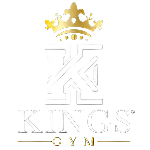
Deciding whether to train for strength or aesthetics is a key question for fitness enthusiasts. Both paths have unique benefits and can complement each other. Ultimately, your choice should depend on your personal fitness goals. If you're keen on lifting heavier weights and developing robust power, focusing on strength training may be your preferred approach.
Strength training involves exercises that target your ability to exert force. Think of moves like squats and deadlifts that work multiple muscle groups. As a bonus, you'll likely see some aesthetic gains as you increase muscle mass. On the other hand, training for aesthetics involves sculpting a balanced and visually appealing physique. This typically includes exercises tailored to specific muscle groups to enhance symmetry and proportion.
When setting your training goals, it's important to consider the long-term benefits each approach offers. If you value functional capability and performance, a focus on strength might suit you best. Those who prioritise their physique's appearance may favour aesthetic training. Both forms of training are not mutually exclusive, and incorporating elements of each can lead to impressive results in the gym.
Understanding Strength vs. Aesthetics

Choosing between training for strength and aesthetics involves different goals and approaches. Each focuses on unique methods and outcomes. Let's break down these aspects into clear, digestible pieces.
Defining Strength and Aesthetics
Strength training prioritises power and endurance. It's about how much weight you can lift and often involves exercises like squats, deadlifts, and bench presses. This approach is popular among power lifters and athletes who seek functional strength.
In contrast, aesthetics focuses on muscle appearance. It targets muscle definition and proportion, commonly pursued by bodybuilders. The key is creating an appealing physique, often with a focus on symmetry and size. While both goals may overlap, the primary intent differs.
Genetic Factors and Body Composition
Genetics plays a crucial role in determining your natural inclination towards strength or aesthetics. Some individuals may naturally gain muscle mass more quickly, while others might find it easier to develop muscle definition.
Body composition also affects training outcomes. People with a higher ratio of fast-twitch muscle fibres may excel in strength but may require targeted training for aesthetic improvements. Understanding your body’s genetic predispositions can help tailor a more effective training strategy.
Common Training Approaches
Strength training often relies on progressive overload. This involves gradually increasing weight or resistance to build muscle mass and strength. Workouts tend to be intense, focusing on compound lifts with lower repetitions.
On the other hand, aesthetic training might incorporate higher repetitions with moderate weights to focus on muscle size and definition. Techniques such as supersets and drop sets can intensify the workout for muscle growth. Popular choices include bodybuilding routines that balance muscle groups symmetrically.
Effective training combines strength and aesthetics for a balanced approach. Whether lifting heavy or aiming for the perfect V-taper, the choice depends on your personal goals and body type.
Training for Power, Looks, or Both: Strategies and Results

Achieving a specific fitness goal, whether it's increased power, an aesthetic physique, or a combination of both, requires distinct strategies. By focusing on particular training principles, you can significantly impact your strength and appearance.
Strength-Focused Training Principles
For those aiming to increase power, focusing on compound movements like the bench press, deadlift, and squat is essential. These exercises recruit multiple muscle groups and improve maximal strength. Rep ranges typically fall around 3-5 for powerlifters, emphasising heavy weights.
Incorporate progressive overload into your programme to continually challenge your muscles. Improvements in strength necessitate gradual increases in the lifting weight. Adequate rest periods are crucial, allowing enough recovery between sets to maximise performance. Conditioning via compounds builds strength and functional mobility, suitable for athletes or anyone pursuing performance training.
Aesthetics-Oriented Training Methods
To sculpt a more defined physique, focus on muscle symmetry and definition through hypertrophy training. This involves combining compound lifts with isolation exercises. Compound movements build solid foundation mass, while isolation exercises target specific areas for enhanced muscle definition.
Utilise a rep range of around 8-12 reps per set to foster muscle hypertrophy. Incorporating varied exercises ensures each muscle group is effectively engaged. Bodybuilders often complement their routines with cardio to maintain a leaner body composition. Achieving look-focused results requires a careful balance of volume and intensity, promoting overall physique development.
Balanced Programmes for Performance and Physique
If your goal is balanced performance and aesthetics, integrate both strength and hypertrophy elements into your training programme. This requires a mix of compound exercises for performance strength and isolation exercises for definition.
Crafting a periodised programme helps manage workload and stimulate various growth aspects. An example week includes heavy compound lifts early on, followed by lighter, high-rep accessory work later. Varying intensities and rest periods trigger comprehensive muscle growth and ensure vocalised development in both power and appearance.
Nutrition, Recovery, and Consistency for Optimal Results
Nutrition lays the foundation for progress. Eating in a caloric surplus supports muscle growth, whereas a deficit aids in fat loss. Adequate protein intake is necessary for muscle repair and development. Incorporate healthy fats and carbohydrates to fuel workouts and recover efficiently.
Recovery is as critical as training. Regular rest periods and quality sleep enhance muscle recovery and growth. This goes hand in hand with consistent training: sticking to a programme over time brings visible results, improves body composition, and boosts overall fitness. Balance, nutrition, and consistency ensure sustainable improvements in both power and aesthetics.
